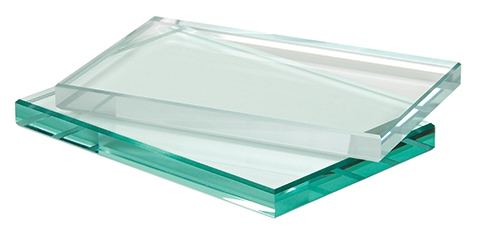
At present, the glass used in the customized processing industry of doors and windows is float glass. So this float hollow glass what is it? What are the advantages of float glass? Let's introduce:
Float Glass:
Float Glass was introduced into the Royal float glass production line by Luoyang glass factory in the late 1970 s in China.
It is in the tin tank, and the glass floats on the surface of the tin liquid. Therefore, this kind of glass is first of all good flatness without water ripples.
Used for making mirror and car glass. It is one of its great advantages that it does not have a face or a shape.
Float Glass uses quartz sand ore with good raw materials. The glass produced is pure, white and transparent. Bright and colorless. No glass, bubbles, etc.
Float Glass has a tight and heavy structure and smooth hand feeling. The same thickness is larger than that of flat plate per square meter, which is easy to cut and not easy to be damaged. More than 30 production lines nationwide are produced strictly in accordance with national standards, and this kind of glass is the best glass for civil buildings. Its price, compared with the same thickness, is only about 4 yuan higher than that of flat glass per square meter.
Production process:
The forming process of float production is completed in the tin tank with protective gas (N2 and H2). Molten glass flows continuously from the pool kiln and floats on the tin liquid surface with high relative density. Under the action of gravity and surface tension, glass detergent is spread out and spread out on the tin liquid surface to form a flat upper and lower surface, after hardening and cooling, transitional roller units are introduced. The roll table roller rotates, pull the glass strip out of the tin trough and enter the annealing kiln. After annealing and cutting, the flat glass product is obtained. Compared with other forming methods, float method has the advantages that it is suitable for manufacturing high-quality flat glass with high efficiency, such as no wave bars, uniform thickness, flat upper and lower surfaces and parallel to each other; the scale of the production line is not limited by the forming method, and the energy consumption per unit product is low; The utilization rate of finished products is high; It is easy to scientifically manage and realize full-current mechanization and automation, and the labor productivity is high; The continuous task cycle can last for several years, it is conducive to stable production; It can provide suitable conditions for online production of some new varieties, such as electro-float reflective glass, sprayed film glass during annealing, cold end surface treatment, etc.
The forming process of float glass production is completed in the tin tank with protective gas (N2 and H2). Molten glass flows continuously from the pool kiln and floats on the tin liquid surface with high relative density. Under the action of gravity and surface tension, glass detergent is spread out and spread out on the tin liquid surface to form a flat upper and lower surface, after hardening and cooling, transitional roller units are introduced. The roll table roller rotates, pull the glass strip out of the tin trough and enter the annealing kiln. After annealing and cutting, the flat glass product is obtained. Compared with other forming methods, float method has the advantages that it is suitable for manufacturing high-quality flat glass with high efficiency, such as no wave bars, uniform thickness, flat upper and lower surfaces and parallel to each other; the scale of the production line is not limited by the forming method, and the energy consumption per unit product is low; The utilization rate of finished products is high; It is easy to scientifically manage and realize full-current mechanization and automation, and the labor productivity is high; The continuous task cycle can last for several years, it is conducive to stable production; It can provide suitable conditions for online production of some new varieties, such as electro-float reflective glass, sprayed film glass during annealing, cold end surface treatment, etc.
What is the difference between sheet glass and float glass
both sheet glass and float glass are flat glass. Only the production process and quality are different.
Sheet glass is made of quartz sand rock powder, silica sand, potassium fossil, soda ash, mirabilite and other raw materials, which are prepared according to a certain proportion. It is melted at high temperature through a melting furnace, and through vertical introduction or flat drawing, transparent five-color flat glass produced by calendering. Sheet Glass according to the appearance quality, it can be divided into three categories: selected products, first-class products and second-class products. It is divided into five types according to thickness: 2, 3, 4, 5 and 6mm.
Float glass is made of raw materials such as sea sand, quartz sand rock powder, soda ash, dolomite and so on. It is prepared in a certain proportion. After melting at high temperature in the melting furnace, glass detergent flows continuously from the pool kiln to and floats on the metal liquid surface, A transparent five-color flat glass with uniform thickness and polished by fire, separated from the molten metal after cooling and hardening, and then cut by annealing. The glass surface is particularly smooth, the thickness is very uniform, and the optical distortion is very small. Float glass is divided into three categories according to appearance quality: superior products, first-class products and qualified products. According to the thickness, it is divided into seven types: 3, 4, 5, 6, 8, 10 and 12mm.
Sheet Glass the appearance quality grade is determined according to the number of defects such as wave bar, bubble, scratch, sand, pimple, and thread. The appearance quality grade of float glass is determined according to the number of defects such as optical deformation, bubbles, inclusion, scratch, line track, fog spot, etc.

